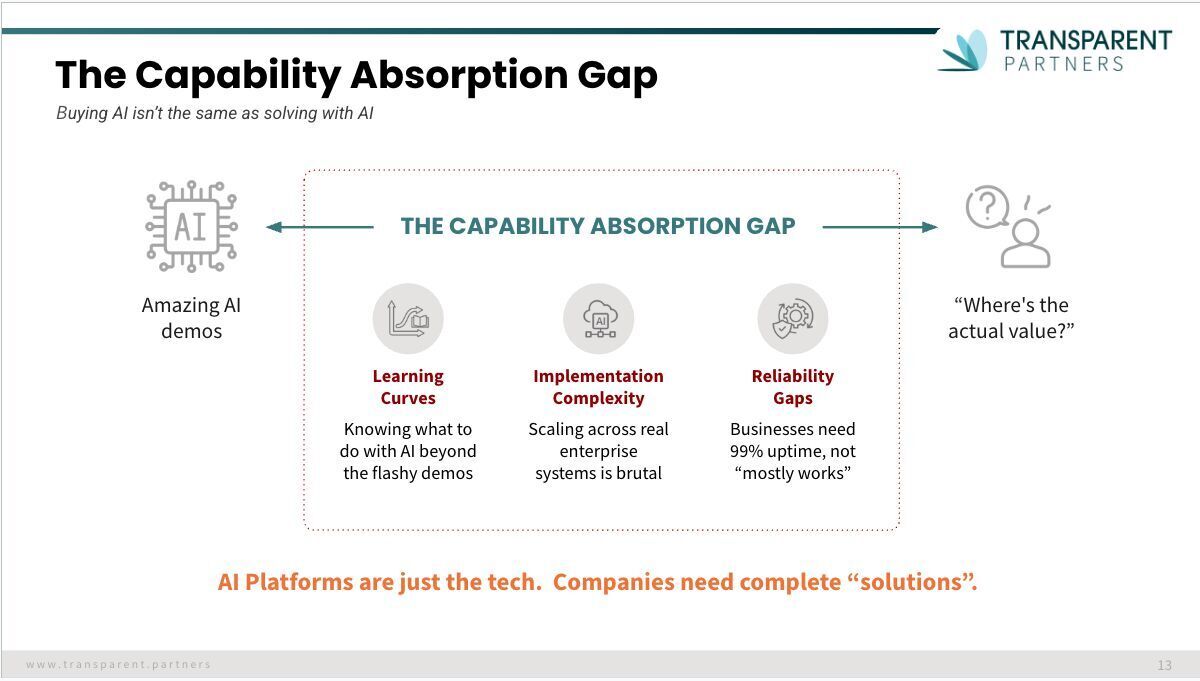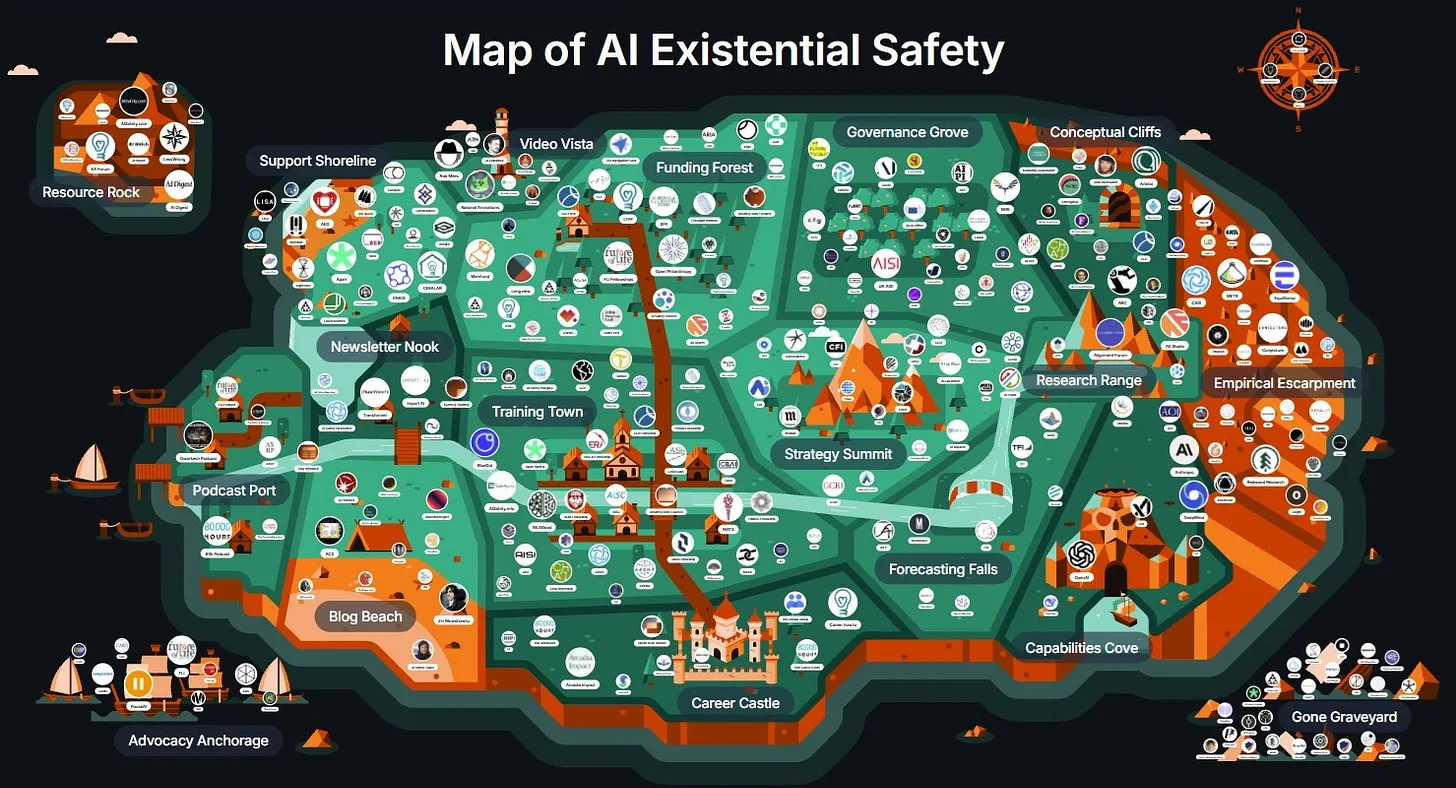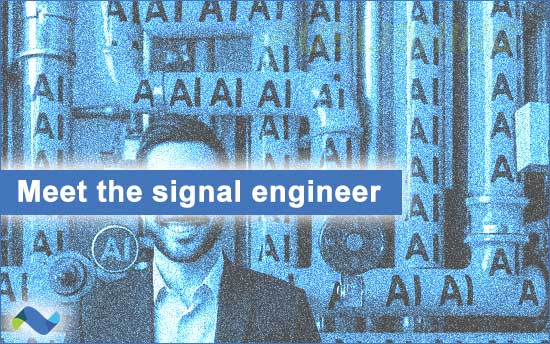LLMs & CHATBOTS
Signal engineering
On Friday, Mobile Dev Memo analyst Eric Seufert explored the concept of signal engineering and its increasing importance to marketers in the age of AI.
Mr. Seufert explained on LinkedIn:
“The topic of signal engineering is newly relevant (and organizationally critical) as a function of platform automation tools like Google’s [AI-enabled Performance and Meta’s AI-enabled] Advantage+ taking a greater share of budget. This trend will not abate: advertisers should expect that every channel they deploy budget to will apply some end-to-end automation framework at some point. In that environment, surfacing ‘signal’ (predicted user value) becomes the primary, if not the only, influence that an advertiser has on performance.”
Mr. Seufert argued that inputs (personalization) not outputs (creative) is where the AI value is:
“My belief is that most advertisers focus too intently on outputs when they consider the value of AI enablement. I think the product economy / journey personalization opportunities with AI tools are far more exciting and substantial than the ad creative opportunities, which I’d mostly expect the platforms to absorb.”
Read more on LinkedIn. (August 15)
Related: Facebook upgrades Professional Dashboard with new insights (August 15) – Search Engine Land
LLMs & CHATBOTS
Developments in LLMs
- “I think ChatGPT-5 was in the right direction. It’s clearly building to an advertising sort of model.” [45:28] (August 15) – Stratechery’s Ben Thompson on the Sharp Tech podcast – Apple Podcasts
- Meta’s standalone Meta AI app offers an uneven experience (August 15) – Bloomberg
- OpenAI in talks to sell around $6 billion in stock at roughly $500 billion valuation (August 15) – CNBC
- I talked to Sam Altman about the GPT-5 launch fiasco (August 15) – The Verge
- Claude Opus 4 and 4.1 can now end a rare subset of conversations (August 15) – Anthropic
BRANDS
Capability Absorption Gap
In a post on LinkedIn, Jon Suarez-Davis, chief commercial officer at incubator superset, laid out “The Capability Absorption Gap” (originally created by Azeem Azhar) that he said was hindering AI’s effectiveness in marketing.
With a hat tip to Aaron Fetters, CEO at Transparent Partners, Suarez-Davis explained the concept: “The biggest barrier to realizing AI’s ROI is not the technology—but the friction within organizations. Learning curves. Implementation complexity. Reliability and trust.”

Read more on LinkedIn. (August 14)
BRANDS
Marketers on AI Search
“Google’s latest spin about the powerful benefits of AI search on websites is being met with skepticism from publishers and marketers who are convinced that their traffic and connection to consumers is suffering. Instead, products such as Google’s AI Overviews and AI Mode lead to fewer clicks to their properties, some publishers and marketers said.”
Read: How marketers are reacting to Google’s rosy picture of AI search impact (August 14) – Ad Age
BRANDS
AI strategic planning, experimentation
In an article for ANA members titled, “The Great Marketing Level-Set: Why AI in 2025 Rewards Strategy, Not Size,” marketing consultant Cord Silverstein urges marketers to plan and experiment so that “AI complements rather than replaces human creativity.” Read more. (subscription)
More: AI is rewriting the rules of B2B marketing with a human touch (August 16) – Storyboard18
AGENCIES
AI and the younger workforce
“Workers under 25 are at their lowest level since 2020, according to U.S. labor data. While plenty of factors are at play, the rise of AI is impossible to ignore.”
Read: The Ad Industry Is Dumping Younger Workers (August 12) – Adweek
SELL-SIDE
Poisoning AI
In an August 12 article on NewScientist, Chris Stokel-Walker outlines how “content creators are poisoning the well of artificial intelligence – but similar technology can also be used to spread misinformation.”
He explained that “AI poisoning” is a defensive tactic that could be used instead of suing. One such example: tricking bots into misreading images (e.g., labeling cars as cows). The challenge: corrupted data might also affect human readers or inadvertently create harmful AIs. Read more. (August 12)
SELL-SIDE
The affiliate trend and AI
We outlined OpenAI’s potential next steps with revenue generation for ChatGPT—affiliate marketing.
Separately, Adweek’s Mark Stenberg noted that creators/influencers (not publishers) are seeing an opportunity with affiliate spend where creators get a cut of product sales.
Publishers, however, are at risk. As Alison Rinaldi (Assembly Global) told Adweek: “The threat is that AI will summarize information directly and link out to purchase, bypassing the publisher entirely.”
Read more. (August 15)
From tipsheet: Having a human creator push your product vs. a publisher mention is compelling. Ironically, AI (by shifting search traffic to answer engines) accelerates this. Will human creators ultimately win the affiliate game?
Does this force OpenAI into considering ads? LUMA Partners’ Terence Kawaja thinks so: LinkedIn.
TECH
Ad tech shaking #1 of 2
Ad tech CEOs shared views on how AI search is “shaking” ad tech in Ad Age.
“DoubleVerify’s Mark Zagorski said the death of the open web has been greatly exaggerated. He also hinted at talks with the AI platforms to build ad businesses of the future.
Magnite CEO Michael Barrett said referral traffic is down for browser-based websites. AI platforms will need an ‘ad play.’
PubMatic CEO Rajeev Goel said AI opens an offensive opportunity: not just large players like OpenAI, but also B2B services, consumer AI chatbots, retail experiences.
Taboola CEO Adam Singolda said there are minor effects so far ‘in the search market driven by LLMs.’
‘We envision a smaller internet, but a more powerful one,’ added Adam Soroca, Magnite’s CPO.’”
Read more on LinkedIn. (August 15)
More: AI search shakes ad tech—but here’s how companies are looking to cash in – Ad Age
TECH
Ad tech shaking #2 of 2
“’Adtech companies are in a surprisingly solid place, with low double-digit growth on average and growing profitability,’ said Brian Wieser, Madison and Wall.”
Read: Adtech Stocks Tumble as AI, Increased Competition Weigh on Revenue (August 14) – Adweek
- “TTD stock commentary is full of misinformation…” (August 17) – Jay Friedman on LinkedIn
- The Trade Desk should buy Yahoo DSP or Criteo [30:50] (August 14) – Marketecture podcast
TECH
Doomer-ism as a business model
Nirit Weiss-Blatt, author of “AI Panic,” updated her map of organizations engaged in “doomerism” as a business model.
She calls it “a visual overview of the key organizations, programs, and projects operating in the AI safety space.”
See it now. (August 13)

More: The ‘AI Existential Risk’ Industrial Complex (January 10) – AI Panic
HR
You’re hired
Former Amobee managing director Matt Hunt takes over as CEO of Australian media agency Frontier Media AI (August 15) – Matt Hunt on LinkedIn
PROMPT
What will the use of bots on the web look like in five years as it relates to advertising?
Response from OpenAI’s ChatGPT:
Within advertising, bots are already playing two very different roles—one beneficial and one problematic—and both trajectories are likely to intensify over the next five years.
On the positive side, “agentic” bots are becoming integral to campaign management…
MORE
- He Sold His Likeness. Now His Avatar Is Shilling Supplements on TikTok. (August 17) – New York Times
- “US vs Google” ad tech antitrust remedies trial witnesses and exhibit lists (August 16) – Arielle Garcia on LinkedIn
- “Made by Google 2025” event on Wednesday – TechCrunch

